Effective Natural Techniques for Eliminating Fleas in Your Home
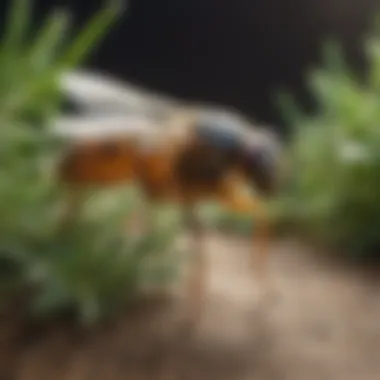

Preventive Pest Control Strategies
When it comes to keeping your home free of fleas and other pests, implementing preventive pest control strategies is crucial. Starting with safeguarding your house exteriors, be sure to seal any cracks or gaps where pests could potentially enter. Also, don't overlook the importance of clearing debris and maintaining a clean outdoor environment to deter pests from finding their way in. For your yard, establish essential care routines that involve regular mowing, trimming, and removing any stagnant water sources that could attract pests. Utilize methods such as natural repellents or barrier plants to keep your yard pest-free and enjoyable for all.
As you transition indoors, prioritize cleanliness to create a pest-resistant environment. Employ expert cleaning techniques to eliminate clutter, food remnants, and other pest attractants. Regularly vacuuming, sweeping, and disinfecting various surfaces can significantly reduce the chances of a flea infestation. Additionally, proper garbage disposal is key to preventing pests like fleas from being drawn to your home. By efficiently disposing of waste and sealing garbage bins, you can minimize the risk of attracting unwanted critters.
Innovative approaches can also be taken to safeguard your home beyond the conventional pest control methods. Consider implementing environmentally-friendly pest prevention strategies such as using beneficial insects or installing natural barriers to deter pests. By combining these preventive measures, you can create a protective shield around your home, making it a less inviting environment for fleas and other pests.
Understanding Fleas
In this section of the article, we delve into the crucial topic of understanding fleas. Understanding the lifecycle and behavior of fleas is essential to effectively combat infestations. By comprehending how fleas develop and thrive, homeowners can implement targeted strategies for eradication. This knowledge equips individuals with the tools to create a pest-free environment naturally without the use of harmful chemicals, aligning with the eco-conscious approach advocated in this piece.
Lifecycle of Fleas
Egg Stage
The egg stage is a pivotal phase in the lifecycle of fleas. Understanding this initial stage is vital as it marks the beginning of an infestation. Flea eggs are typically laid on animals or in their living environments, such as carpets or bedding. These tiny, oval-shaped eggs are almost invisible to the naked eye, making detection challenging. Despite their small size, flea eggs pose a significant threat as they hatch into larvae, perpetuating the infestation cycle.
Larval Stage
The larval stage follows the egg stage, representing a critical period of development for fleas. Larvae emerge from eggs in search of organic matter for nutrition and protection. They are capable of moving through carpet fibers and crevices, making them difficult to eradicate through traditional cleaning methods. Larvae undergo multiple molts during this stage, progressively maturing into pupae. Their elusive nature and preference for dark, undisturbed areas complicate elimination efforts.
Pupal Stage
The pupal stage is where flea larvae undergo metamorphosis, transforming into their adult forms. Pupae construct cocoons that serve as protective shields, shielding them from environmental threats and pesticides, rendering them resistant to conventional extermination methods. This dormant phase allows fleas to bide their time and emerge when conditions are favorable, perpetuating the infestation cycle. The resilience of pupae underscores the challenges homeowners face in eradicating fleas completely.
Adult Fleas
Adult fleas represent the final stage in the flea lifecycle. These blood-feeding parasites emerge from their cocoons ready to seek out hosts for sustenance and reproduction. Female adult fleas can lay hundreds of eggs throughout their lifespan, fueling infestations and maintaining population levels. Their agility, reproductive capacity, and resilience make adult fleas formidable opponents in the battle against infestations, requiring a comprehensive approach to achieve long-term eradication.
Signs of Flea Infestation
Pet Scratching
Pet scratching is a common indicator of flea infestations. Pets may exhibit excessive itching, biting, and scratching in response to flea bites, leading to skin irritation and discomfort. Observing your pets for signs of distress can help identify infestations early and prompt timely intervention. Regular grooming and flea prevention measures can mitigate the impact of infestations on pets' well-being.
Visible Fleas
Visible fleas are undeniable proof of an infestation. These tiny, agile insects can be observed on pets' fur, carpets, and furniture, signifying a thriving population. Identifying visible fleas necessitates thorough inspection and swift action to prevent further proliferation throughout the home. Early detection is key to containing infestations and preventing widespread colonization.
Flea Dirt
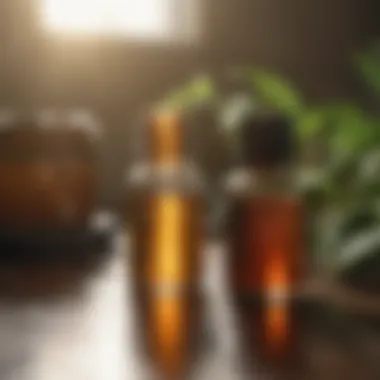

Flea dirt, also known as flea feces, is a telltale sign of infestations. This dark, gritty residue is left behind by fleas, indicating their presence in the environment. Flea dirt often accumulates on pet bedding, carpets, and upholstery, serving as indirect evidence of an infestation. Recognizing and addressing flea dirt promptly is crucial in combatting infestations and safeguarding your living space from these persistent pests.
Home Remedies for Fleas
In the realm of natural pest control, implementing home remedies for fleas plays a pivotal role in maintaining a healthy living environment. These remedies offer a non-toxic alternative to traditional methods, ensuring the eradication of fleas without exposing your household to harmful chemicals. By focusing on affordable and accessible ingredients, such as diatomaceous earth and essential oils, you can effectively combat flea infestations while prioritizing the well-being of your family and pets.
Vacuuming
Frequency of Vacuuming
When it comes to flea control, the frequency of vacuuming stands out as a cornerstone practice in eliminating these pesky pests from your home. Regular vacuuming helps to remove flea eggs, larvae, and adults from carpets, furniture, and hard-to-reach areas, disrupting their life cycle and preventing infestations. By incorporating consistent vacuuming sessions into your cleaning routine, you create an inhospitable environment for fleas, reducing their population and the likelihood of reinfestation.
Use of Vacuum Attachments
Utilizing vacuum attachments enhances the efficiency of flea removal by targeting crevices, corners, and upholstery where fleas and their eggs tend to hide. These attachments enable you to reach areas that a standard vacuum cleaner may overlook, ensuring comprehensive cleaning and heightened effectiveness in flea control. By paying attention to detail and utilizing the appropriate attachments, you significantly improve the success rate of your flea eradication efforts.
Disposal of Vacuum Bag
Proper disposal of the vacuum bag after each cleaning session is essential in preventing reinfestation and ensuring the removal of captured fleas and their eggs. Seal the filled vacuum bag in a plastic bag before disposing of it in an outdoor trash receptacle to prevent fleas from escaping and re-entering your home. This final step in the vacuuming process is critical to maintaining a flea-free environment and maximizing the efficacy of this natural pest control method.
Diatomaceous Earth
Application Method
Application of diatomaceous earth involves sprinkling this natural powder in areas prone to flea infestations, such as pet bedding, carpets, and baseboards. The abrasive texture of diatomaceous earth damages the exoskeleton of fleas upon contact, dehydrating and ultimately killing them. This method not only targets adult fleas but also disrupts the life cycle by affecting flea larvae and eggs, making it a comprehensive and effective solution for flea control
Safety Precautions
When using diatomaceous earth, it is essential to wear a mask to avoid inhaling the fine particles, which can irritate the respiratory system. Additionally, ensure pets and children are kept away from treated areas until the powder has settled to prevent accidental ingestion or contact. By following safety precautions, you minimize health risks and maximize the benefits of diatomaceous earth in combating fleas naturally.
Effectiveness
Diatomaceous earth's effectiveness lies in its ability to target fleas through a mechanical process, making it a safe and reliable option for pest control. Unlike chemical insecticides, diatomaceous earth poses minimal risks to humans and pets, providing a non-toxic solution for managing flea infestations. By harnessing the natural properties of this powder, you can achieve long-lasting results in flea eradication without compromising the health and safety of your household.
Essential Oils
Lavender Oil
Lavender oil serves as a versatile essential oil with potent insect-repelling properties, making it a valuable asset in the fight against fleas. Its pleasant aroma not only masks the odors that attract fleas but also repels them, creating a soothing and flea-free environment. By diluting lavender oil with water and applying it to surfaces frequented by fleas, you can deter these pests effectively, benefiting from a natural and aromatic pest control solution.
Lemongrass Oil
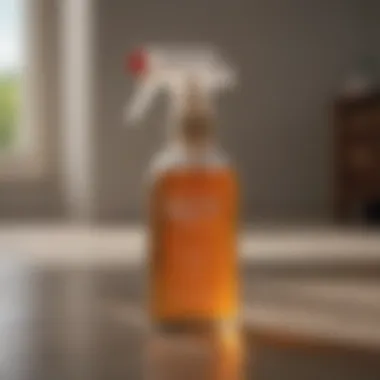
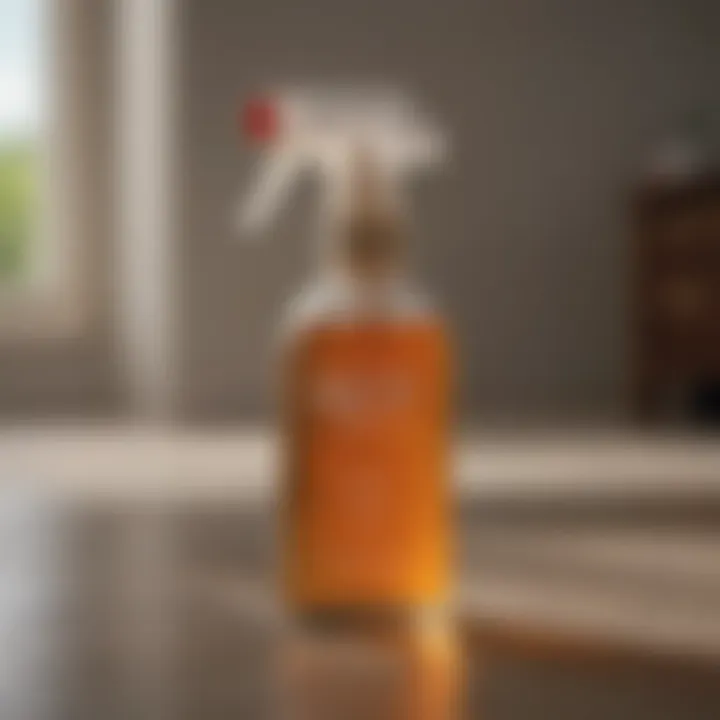
Renowned for its insecticidal properties, lemongrass oil acts as a potent deterrent against fleas, ticks, and other pests. Its high citral content disrupts the nervous systems of fleas upon contact, leading to their demise without harmful side effects for humans and pets. By diffusing lemongrass oil or creating a DIY flea spray, you can leverage its repellent qualities to safeguard your home from flea infestations.
Peppermint Oil
Peppermint oil exudes a strong minty scent that repels fleas while leaving a refreshing aroma in your living spaces. Its active compounds, such as menthol, possess insecticidal properties that disrupt the sensory receptors of fleas, deterring their presence without resorting to toxic chemicals. Whether used in a spray solution or diffused in the air, peppermint oil offers a natural and fragrant approach to flea control, promoting a clean and pest-free home environment.
Herbal Flea Spray
Preparation
Crafting a herbal flea spray involves combining water, vinegar, and essential oils known for their insect-repelling properties, such as lavender or eucalyptus oil. This simple yet potent mixture can be sprayed on pet bedding, carpets, and furniture to deter fleas and refresh your living spaces. By customizing the blend to suit your preferences and needs, you can create a personalized herbal flea spray that effectively combats infestations while enhancing the overall ambiance of your home.
Application
Applying herbal flea spray involves evenly distributing the mixture on surfaces susceptible to flea activity, ensuring thorough coverage and penetration into potential hiding spots. By focusing on areas where pets frequent or where fleas are commonly found, you maximize the repellent effects of the spray, creating an inhospitable environment for these pests. Consistent application of herbal flea spray promotes long-term flea control and contributes to a healthier and more comfortable living environment.
Repellent Properties
The repellent properties of herbal flea spray stem from the combined actions of vinegar, essential oils, and water, creating an aromatic barrier that deters fleas from establishing themselves in your home. Vinegar's acidic nature repels fleas, while essential oils like lavender and eucalyptus add a potent scent that masks attractant odors. By harnessing these natural ingredients, herbal flea spray offers a safe and effective method for repelling fleas without harsh chemicals, promoting sustainability and peace of mind in your home.
Cleaning Practices to Combat Fleas
Cleaning practices play a crucial role in combating flea infestations within your home. By implementing effective cleaning routines, you can significantly reduce the presence of fleas and create a healthier living environment. Regular cleaning not only helps in eliminating fleas but also prevents future infestations, making it a vital aspect of flea control strategy. By focusing on specific elements such as washing bedding and linens, steam cleaning, and clutter removal, you can tackle fleas effectively and sustainably.
Washing Bedding and Linens
When dealing with flea infestations, maintaining clean bedding and linens is essential. Hot water temperature is a key factor in ensuring the elimination of fleas and their eggs. Washing bedding and linens at high temperatures helps kill fleas at all stages of their life cycle, preventing reinfestation. The unique feature of hot water temperature lies in its ability to effectively destroy fleas and provide a hygienic sleeping environment. Although hot water washing is highly beneficial, it is essential to consider the fabric care instructions to prevent damage.
Hot Water Temperature
Hot water temperature is a popular choice for flea control due to its ability to kill fleas effectively. The high temperature ensures the elimination of fleas, larvae, and eggs present in bedding and linens. This method offers a chemical-free approach to tackling fleas and is safe for both humans and pets. However, care must be taken to follow fabric care instructions to prevent shrinkage or damage to the materials.
Drying Process
After washing bedding and linens, the drying process plays a crucial role in preventing flea reinfestation. Drying bedding at high temperatures further eliminates any remaining fleas or eggs, ensuring a thorough removal process. The unique feature of the drying process is its ability to complement hot water washing by completely eradicating fleas and their larvae. While effective, it is important to follow fabric care labels to avoid shrinking or damaging textiles.
Frequency of Washing
Maintaining a regular washing schedule for bedding and linens is imperative for flea control. Frequent washing helps remove fleas, dirt, and eggs, disrupting the flea life cycle. The key characteristic of frequent washing lies in its preventive nature, reducing the chances of reinfestation. While this practice is highly beneficial for flea control, it is vital to adhere to manufacturer's recommendations for washing specific fabrics.
Outdoor Flea Prevention
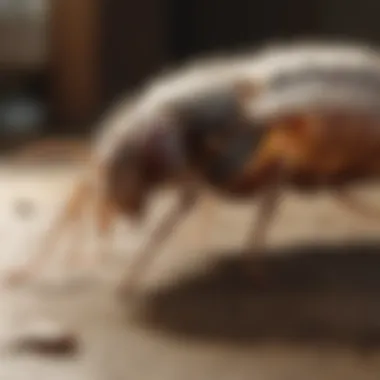
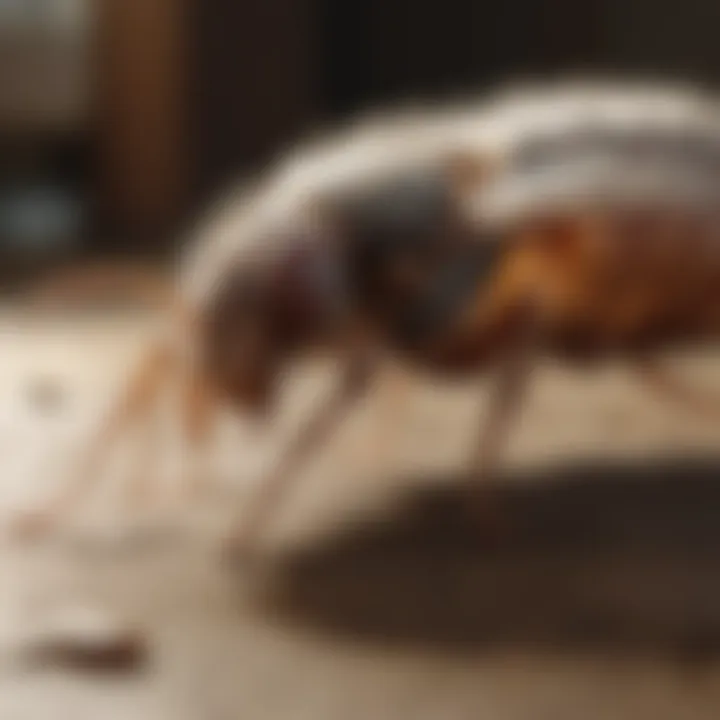
When it comes to combating flea infestations, outdoor flea prevention plays a pivotal role in eradicating these pesky pests from your living environment. Implementing effective outdoor flea prevention strategies not only helps in controlling the flea population but also creates a barrier to prevent reinfestation. By focusing on outdoor areas, you can significantly reduce the likelihood of fleas entering your home, thus creating a flea-free zone. Effective outdoor flea prevention shields your living space from potential flea infestations, safeguarding both your household members and pets.
Yard Maintenance
Mowing the Lawn:
Mowing the lawn is a fundamental aspect of yard maintenance that contributes significantly to outdoor flea prevention. By keeping the grass trimmed to an optimal height, mowing the lawn eliminates flea habitats, reducing their breeding grounds. The regular act of mowing ensures that fleas have fewer places to hide and reproduce, ultimately lowering the overall flea population in your yard. The distinct benefit of mowing the lawn lies in its ability to create an environment that is unfavorable for flea survival, making it a popular and effective choice for flea control in outdoor spaces.
Pruning Overgrowth
Pruning overgrowth is another crucial component of yard maintenance that complements mowing the lawn in combatting flea infestations. This practice involves trimming back excess vegetation, such as bushes and shrubs, which may act as hiding spots for fleas. By removing these potential flea habitats, pruning overgrowth helps limit the areas where fleas can thrive. The unique feature of pruning overgrowth lies in its ability to increase yard sanitation, reducing the risk of flea infestation. While advantageous in controlling fleas, one disadvantage of pruning overgrowth is the time and effort required to maintain an adequately pruned yard.
Safe Pest Control Methods
Utilizing safe pest control methods is essential for effective outdoor flea prevention while minimizing harm to the environment, household members, and pets. These methods encompass environmentally friendly approaches to eliminate fleas and prevent their return. By opting for safe pest control methods, you can eradicate fleas without compromising the well-being of other organisms in your yard. The unique feature of safe pest control methods is their sustainable nature, making them an eco-conscious choice for outdoor flea prevention. While advantageous for environmental health, one downside of safe pest control methods may be their initial investment cost, which can be higher than traditional chemical treatments.
Professional Pest Control Advice
Professional pest control advice is a crucial component when dealing with flea infestations at home. Pest controllers are equipped with the knowledge and expertise to effectively identify, target, and eradicate fleas from your living space. Their professional assistance ensures a thorough and long-lasting solution to the pest problem. By enlisting the services of pest exterminators, homeowners can benefit from specialized techniques and treatments that are not easily accessible to the general public. This article highlights the importance of seeking professional help to combat fleas effectively without resorting to harmful chemicals.
Consulting Pest Exterminators
Benefits of Professional Assistance
Professional assistance in pest control offers homeowners peace of mind knowing that trained professionals are handling the infestation. Their expertise allows for a targeted approach to flea extermination, minimizing the risk of reinfestation. Additionally, pest controllers use industry-approved methods that are safe for both residents and pets, ensuring a healthy living environment post-treatment. The thorough assessment and customized treatment plans provided by professionals contribute significantly to the overall success of flea eradication strategies without compromising on effectiveness.
Choosing Reputable Exterminators
Selecting reputable exterminators is essential to ensure quality service and reliable outcomes. Reputable exterminators possess the necessary certification and experience to handle flea infestations efficiently. Their reputation for delivering results and customer satisfaction makes them a popular choice for homeowners seeking effective pest control solutions. By choosing reputable exterminators, homeowners can rest assured that their flea problem will be addressed promptly and professionally.
Treatment Options
Professional pest exterminators offer a range of treatment options tailored to the specific needs of each infestation. These options may include environmentally friendly products, targeted application methods, and follow-up treatments to ensure the thorough removal of fleas from the premises. The advantage of professional treatment options lies in their efficacy and long-lasting impact, providing homeowners with a sustainable solution to their flea problem. While cost may be a consideration, the benefits of professional treatment options outweigh the initial investment in terms of effectiveness and peace of mind.
Follow-Up Measures
Monitoring Flea Activity
After professional treatment, monitoring flea activity is crucial to assess the effectiveness of the intervention. Regular monitoring allows homeowners to track any signs of reinfestation and take preventive action promptly. By monitoring flea activity, homeowners can ensure that the pest problem is fully resolved and maintain a flea-free environment in the long term.
Preventive Actions
Preventive actions play a key role in preventing future flea infestations. Professional exterminators provide valuable insights into effective preventive measures that homeowners can implement. These actions may include sealing entry points, maintaining cleanliness, and using pet-safe flea control products. By following preventive actions recommended by experts, homeowners can minimize the risk of future flea problems and safeguard their living space.
Regular Inspections
Regular inspections conducted by pest control professionals help in early detection of potential flea infestations. These inspections enable timely intervention and prevent minor issues from escalating into full-blown infestations. By scheduling regular inspections, homeowners can proactively address any pest-related concerns and maintain a pest-free environment. The systematic approach of regular inspections ensures that any emerging flea problems are addressed promptly, providing peace of mind for homeowners.



